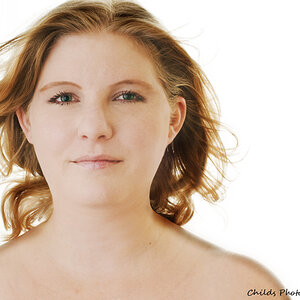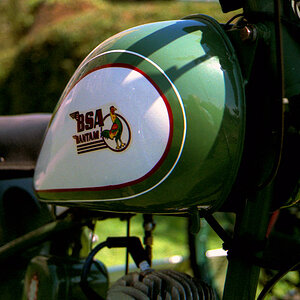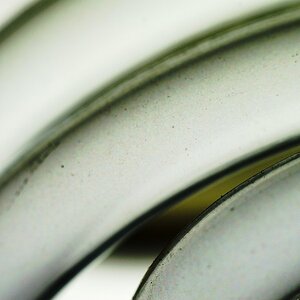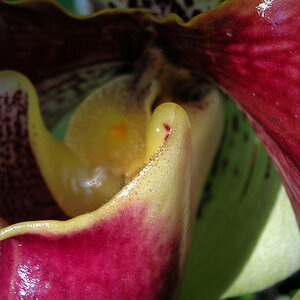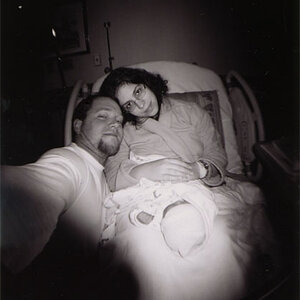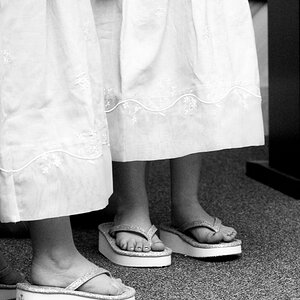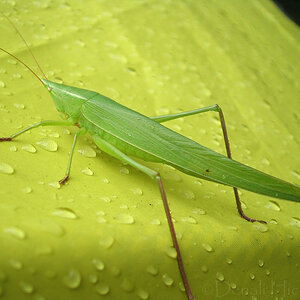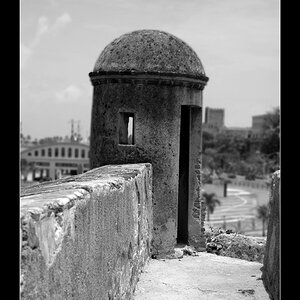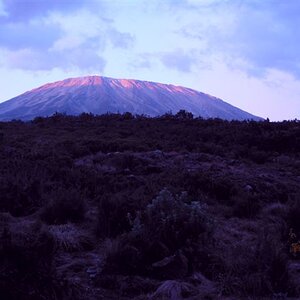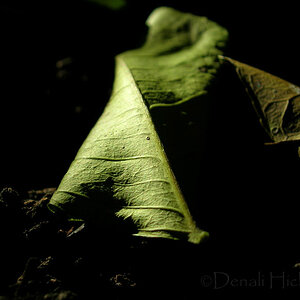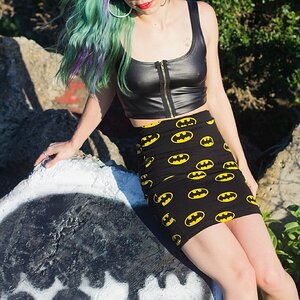Navigation
Install the app
How to install the app on iOS
Follow along with the video below to see how to install our site as a web app on your home screen.

Note: This feature currently requires accessing the site using the built-in Safari browser.
More options
You are using an out of date browser. It may not display this or other websites correctly.
You should upgrade or use an alternative browser.
You should upgrade or use an alternative browser.
fluorescent on the kelvin scale
- Thread starter joelhead
- Start date
Garbz
No longer a newbie, moving up!
- Joined
- Oct 26, 2003
- Messages
- 9,713
- Reaction score
- 203
- Location
- Brisbane, Australia
- Website
- www.auer.garbz.com
- Can others edit my Photos
- Photos NOT OK to edit
Somewhere between 1 and all ****ed up... depending on the time of day.
Fluorescents don't produce a black body spectrum and thus can't be described in kevlin. This is why when you auto white balance from a grey card using a fluro you will typically see the tint slider shoot off in one direction or the other. Also the colour characteristics change with voltage swing too. Depending on shutter speed, and bulb you may get a different white balance every time you click the button.
You can get fluorescents that approximate all matters of colour temperatures, but often enough they aren't spot on and the tint may still be a problem. If you're buying generic tubes from target it becomes a lucky dip
Fluorescents don't produce a black body spectrum and thus can't be described in kevlin. This is why when you auto white balance from a grey card using a fluro you will typically see the tint slider shoot off in one direction or the other. Also the colour characteristics change with voltage swing too. Depending on shutter speed, and bulb you may get a different white balance every time you click the button.
You can get fluorescents that approximate all matters of colour temperatures, but often enough they aren't spot on and the tint may still be a problem. If you're buying generic tubes from target it becomes a lucky dip
- Joined
- Apr 9, 2009
- Messages
- 41,401
- Reaction score
- 5,706
- Location
- Iowa
- Website
- kharrodphotography.blogspot.com
- Can others edit my Photos
- Photos OK to edit
+1 ^ ^ ^ ^ ^ ^ ^ ^.
60 Hz. in the US (60 cycles per second).
60 Hz. in the US (60 cycles per second).
epatsellis
TPF Noob!
- Joined
- Apr 15, 2008
- Messages
- 542
- Reaction score
- 23
- Can others edit my Photos
- Photos NOT OK to edit
If you are interested in color accuracy, Philips makes a T8 bulb with a CRI (color rendering index) of 95.
c.cloudwalker
TPF Noob!
- Joined
- Jun 15, 2009
- Messages
- 5,394
- Reaction score
- 405
- Location
- An American in Europe
- Can others edit my Photos
- Photos NOT OK to edit
It might be nice to know why you ask so as, maybe, help you better.
I agree with Garbz's post although I would have added that I was told that fluo bulbs tend to change color as they age.
Not matter what, fluo tend to give shots a cast that is most unpleasant and I used to deal with that with gels. Yes, I would gel every fluo in the room to turn it to (somewhat) day light. Now, this was in the age of dinosaurs (I mean the age of film photo.)
It was not perfect but if you consider that most of us have no idea what natural light is anymore because of being exposed to such weird lights all the time, it worked great.
In today's digital photo world, you can deal with it with a custom white balance or by shooting RAW and fixing it in PP.
I agree with Garbz's post although I would have added that I was told that fluo bulbs tend to change color as they age.
Not matter what, fluo tend to give shots a cast that is most unpleasant and I used to deal with that with gels. Yes, I would gel every fluo in the room to turn it to (somewhat) day light. Now, this was in the age of dinosaurs (I mean the age of film photo.)
It was not perfect but if you consider that most of us have no idea what natural light is anymore because of being exposed to such weird lights all the time, it worked great.
In today's digital photo world, you can deal with it with a custom white balance or by shooting RAW and fixing it in PP.
Garbz
No longer a newbie, moving up!
- Joined
- Oct 26, 2003
- Messages
- 9,713
- Reaction score
- 203
- Location
- Brisbane, Australia
- Website
- www.auer.garbz.com
- Can others edit my Photos
- Photos NOT OK to edit
If you are interested in color accuracy, Philips makes a T8 bulb with a CRI (color rendering index) of 95.
If you're interested in color accuracy you may be interested to know that manufacturers now make bulbs with phosphors at very specific wavelengths just so they look great when subjected to CRI tests, and that high CRI numbers do not necessarily correlate well with human visual perception when the source has a spiky emission spectra (white LEDs and fluros). The industry has turned into the car sound industry where I'm suddenly supposed to believe my friends car can put out 8kW of sound running from a car battery on cheap crap gear.

You're stuck with trusting your eyes, and not the numbers, hold a CD up to the light and look at the spectrum for a very rough idea of where your light is at.
Dwig
TPF Noob!
- Joined
- Mar 11, 2009
- Messages
- 1,261
- Reaction score
- 1
- Location
- Key West FL
- Website
- happythursday.com
- Can others edit my Photos
- Photos NOT OK to edit
where would you say fluorescent lights fall on the kelvin scale temperature wise???
Somewhere ... usually between 2600K and 7000K. It depends on the particular type of fluorescent lamp.
The Kelvin rating refers to the temperature of a "black body radiator" that emits a particular balance of colors. The higher temperatures emit a higher percentage of the upper, blue, end of the spectrum.
The problem with fluorescents is that they are not black body radiators that emit a continous spectrum. Instead, they emit light only at specific colors, what is called an emission line spectrum. Common fluorescents, regardless of Kelvin temp rating, emit a rather high amount of green and are missing some portions of the reds.
A rating system exists that rates how well a particular light source matches the spectrum of a black body radiator of some Kelvin temperature. This rating is the lamps Color Rendering Index (CRI). A CRI of 100 is a perfect match. Conventional incandescent lamps, when not filtered by some colored tint in their glass envelop have CRI ratings of 99-100. Quartz-halogen lamps generally have ratings in the 98-99 range, though some that have dichroic reflectors can be a bit lower. Fluorescents are generally in the CRI 70-80 range, rather poor for color matching and photography. There are a few special fluorescents that have CRI ratings in the 89-95 range.
It is generally considered that a CRI rating of 90 or higher is required for visual color matching. Most objects will photograph well when the CRI is 90 or higher provided the proper Kelvin balance adjustments are made. Most high CRI fluorescents have a Kelvin balance between 5000K and 5500K, though some are in the 7000 range.
Dwig
TPF Noob!
- Joined
- Mar 11, 2009
- Messages
- 1,261
- Reaction score
- 1
- Location
- Key West FL
- Website
- happythursday.com
- Can others edit my Photos
- Photos NOT OK to edit
ok i want to get the typical green fluorescent tone that you would see in film photos
With digital, start with the following:
1. Use "Cool White" fluorescent lamps. Avoid the "Warm White" lamps.
2. Set the camera's WB to "daylight" or 5500K
3. Shoot RAW
4. When converting the RAW, leave the WB Kelvin slider at 5500K and adjust the M/G (Magenta/Green) slider as necessary. You may find that with modern Cool White lamps you need to move the slider a bit toward the green to simulate the look of fluorescent lamps from 20-40 years ago.
5. After RAW conversion, you may find that decreasing the color saturation of the red channel, by itself, improves the simulation.
joelhead
TPF Noob!
- Joined
- Dec 7, 2008
- Messages
- 37
- Reaction score
- 0
- Location
- Ogden, UT
- Can others edit my Photos
- Photos NOT OK to edit
ok i want to get the typical green fluorescent tone that you would see in film photos
With digital, start with the following:
1. Use "Cool White" fluorescent lamps. Avoid the "Warm White" lamps.
2. Set the camera's WB to "daylight" or 5500K
3. Shoot RAW
4. When converting the RAW, leave the WB Kelvin slider at 5500K and adjust the M/G (Magenta/Green) slider as necessary. You may find that with modern Cool White lamps you need to move the slider a bit toward the green to simulate the look of fluorescent lamps from 20-40 years ago.
5. After RAW conversion, you may find that decreasing the color saturation of the red channel, by itself, improves the simulation.
AWSOME!, its works brilliantly! thank you very much
Similar threads
- Replies
- 9
- Views
- 2K
- Replies
- 0
- Views
- 120


